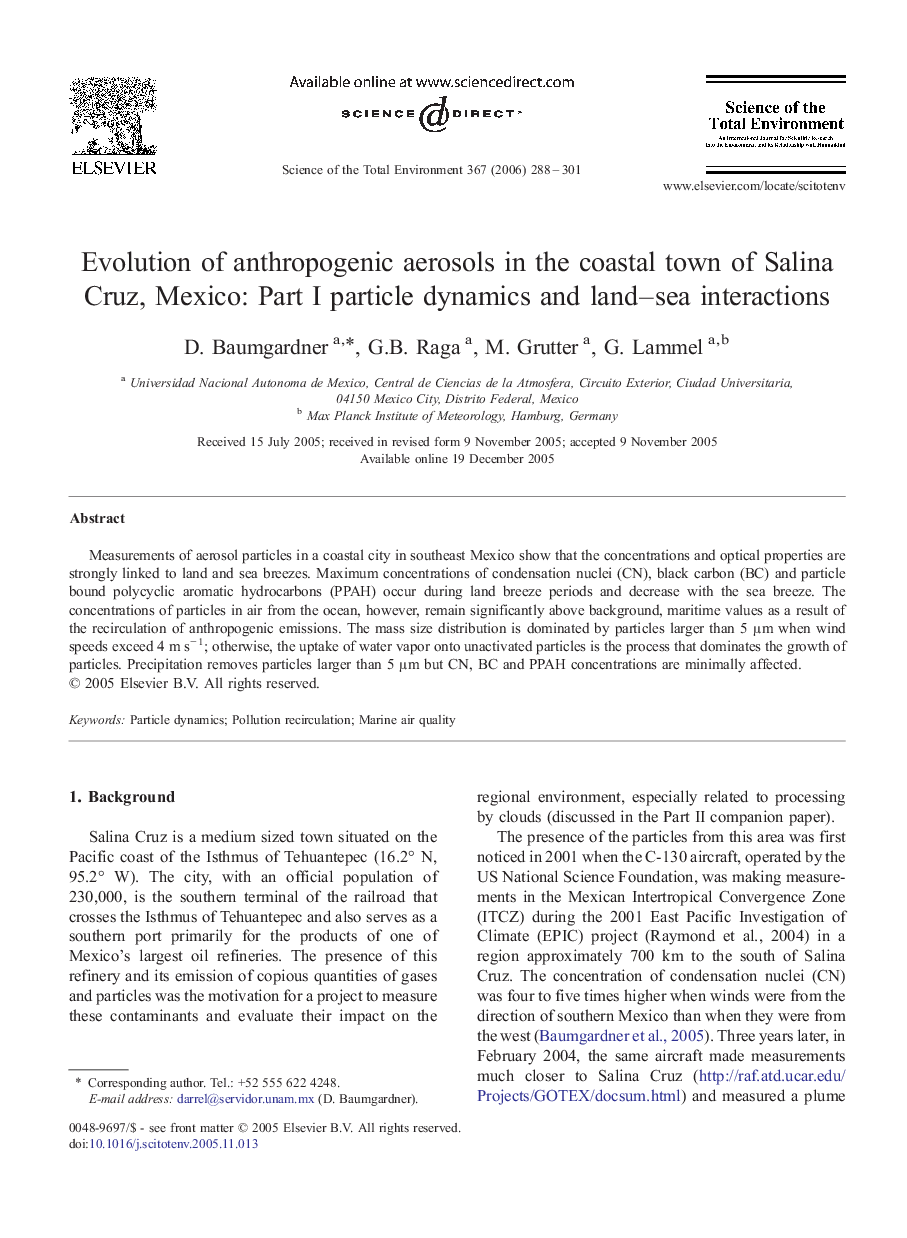| Article ID | Journal | Published Year | Pages | File Type |
|---|---|---|---|---|
| 4434003 | Science of The Total Environment | 2006 | 14 Pages |
Measurements of aerosol particles in a coastal city in southeast Mexico show that the concentrations and optical properties are strongly linked to land and sea breezes. Maximum concentrations of condensation nuclei (CN), black carbon (BC) and particle bound polycyclic aromatic hydrocarbons (PPAH) occur during land breeze periods and decrease with the sea breeze. The concentrations of particles in air from the ocean, however, remain significantly above background, maritime values as a result of the recirculation of anthropogenic emissions. The mass size distribution is dominated by particles larger than 5 μm when wind speeds exceed 4 m s− 1; otherwise, the uptake of water vapor onto unactivated particles is the process that dominates the growth of particles. Precipitation removes particles larger than 5 μm but CN, BC and PPAH concentrations are minimally affected.
